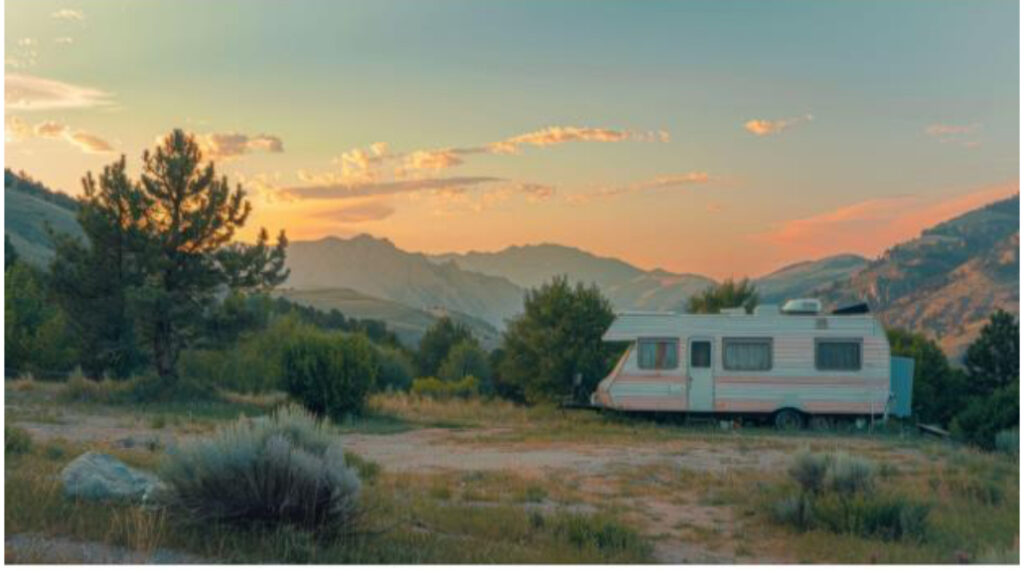Why California Owners Are Dumping Mold-Damaged RVs for Cash
Share
Share

Mold is one of the most destructive problems RV owners face, especially in a state like California, where fluctuating coastal humidity and long-term storage can create the perfect environment for fungal growth. Once mold finds its way into an RV’s walls, floors, or HVAC system, it becomes more than a cosmetic issue. It affects air quality, compromises materials, and significantly reduces the vehicle’s value.
Rather than spending thousands on remediation or risking prolonged exposure, many individuals now choose to sell their junk RV for cash in California. Mold damage has transformed once-functional motorhomes into liabilities, prompting a growing number of owners to seek swift, practical solutions.
How Mold Spreads in California’s Climate
While California is often associated with sunshine and dry heat, certain regions—particularly along the coast, in the north, or at higher elevations—experience high moisture levels. RVs stored in driveways, under tarps, or in shaded areas often develop condensation, especially when temperature swings between day and night.
2 / 4
Interior leaks from worn seals, cracked skylights, or faulty plumbing can go unnoticed during long storage periods. When left unresolved, moisture seeps into insulation, floorboards, cabinetry, and even electrical systems. Once mold takes hold, it spreads through spores, and the contamination becomes increasingly difficult to contain.
Many RV owners discover mold only after reopening their vehicles for travel—by then, the interior often has a musty odor, visible spotting, and deteriorated surfaces.
Health Risks and Structural Damage Drive Quick Sales
Mold in RVs isn’t just an inconvenience—it poses real health hazards. Prolonged exposure to mold spores can trigger respiratory issues, allergic reactions, and eye or skin irritation. For owners with asthma, compromised immune systems, or young children, continued use of a contaminated RV becomes unsafe.
Beyond health concerns, mold can seriously weaken an RV’s structure. Water-damaged wood loses its strength, floors become soft, and mold eats away at fabric, insulation, and wallpaper. Once the damage is severe, the cost of restoration often exceeds the unit’s value.
In these cases, selling a junk RV for cash in California becomes the most logical route. Reputable buyers who deal with damaged vehicles can extract usable parts or recycle components, offering owners a way out without incurring costly repairs.
Mold Removal Costs Outpace Most RV Budgets
Mold remediation in an RV is not as simple as cleaning a small patch of mildew. Complete removal often requires:
Professional remediation services typically charge between $1,000 and $5,000, depending on the severity and size of the contamination. For older RVs or those with pre-existing wear, this investment may not be financially sensible, especially if the engine, plumbing, or roof also require repair.
3 / 4
Many owners realize they are better off taking cash now rather than continuing to lose money on a vehicle with declining value and rising maintenance costs.
Legal Considerations When Selling a Mold-Damaged RV in California
Even when selling for scrap or parts, California requires proper title transfer and disclosure. The state has strict laws regarding the sale of used vehicles, including classifications for salvage and junk. When mold damage affects livability or function, complete transparency protects sellers from future liability.
A legitimate buyer will ask for:
Suppose the RV has been declared a total loss or issued a salvage title; that must also be disclosed. Selling to a licensed dismantler or salvage yard simplifies this process, as these businesses are equipped to handle paperwork and report the transaction to the California DMV.
Demand for Damaged RVs Still Exists in California
Despite significant damage, junk RVs can still hold value. California has a robust market for parts, particularly in areas where RV living, van conversions, or mobile businesses are prevalent. Components like engines, tires, propane systems, and solar panels can be reused, even if the interior is no longer habitable.
Inland buyers may be interested in repurposing the shell for use as work trailers, tiny homes, or off-grid projects. Others seek fiberglass or aluminum siding for restoration jobs.
This ongoing demand creates opportunities for sellers to offload their mold-damaged vehicles quickly, provided they connect with the right buyer who understands the scope of the damage and the salvage potential.
Preparing a Mold-Damaged RV for Removal
To make the selling process smoother, take a few steps before pickup:
4 / 4
Even if the RV is heavily contaminated, a well-organized presentation helps buyers assess value more quickly, resulting in quicker offers.
In many California cities—especially Los Angeles, San Diego, Sacramento, and Fresno—buyers can arrange same-day or next-day pickup, depending on location and accessibility. If the RV is located in a gated area, backyard, or tight urban setting, communicate any challenges upfront.
Why Dumping Moldy RVs Has Become the Sensible Move
Owning an RV in California comes with high expectations, but when mold damage occurs, those dreams can quickly become a burden. Restoration often proves more expensive than resale value, and continued storage only worsens the problem. Owners looking for a fast, no-hassle solution increasingly opt to sell their junk RV for cash in California, cutting their losses and avoiding further repair bills.
With a bit of preparation and the right buyer, it’s entirely possible to walk away from a mold-ridden RV and recover some value from what remains.
Leave a Reply